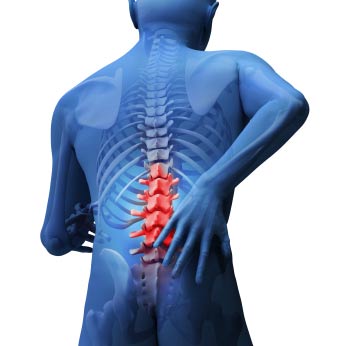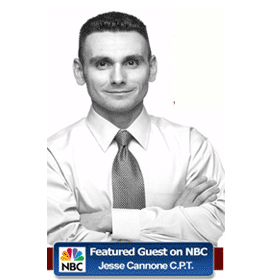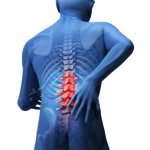Do I Have Acute Back Pain Or Chronic Back Pain
Whereas acute back pain is only a symptom, which may resolve within a few days, and is not considered a disease; chronic back pain is associated with long-term persistence of pain. However, after learning the actual causes of chronic back pain, new and effective methods of treatment have been recommended. The causes of chronic back pain may vary, for example, it may be caused by damage to the nerves or inflammatory pain experienced by injury of the nociceptors. Back pain may also be associated with injury to the spinal cord as a result of improper posture or an accident. Other causes of chronic back pain are pain from ageing, when there is minute wear and tear of the tissue cells. A herniated disc is also a major cause of back pain where the spinal discs tear through the protected covering. If you are asking yourself do I have acute back pain or chronic back pain, please read this article.
Do I Have Acute Back Pain Or Chronic Back Pain
Acute back pain is not a disease; it is a symptom that can occur for many reasons. Acute pain is defined as pain that occurs in response to an injury or inflammation and which usually resolves over a few days. Over the years, almost everyone experiences normal wear and tear, or degeneration, of the spine from regular activities.
This may not cause problems or it may result in occasional back pain that responds to home remedies. For others, the process of degeneration may be more significant, causing greater, longer-lasting pain and limiting activity.
Chronic pain is pain that persists and does not go away long after the first incident. Some think of chronic pain as a disease. Fortunately, doctors have learned more about the causes of this kind of back pain and there are new and effective ways to treat it.
Types of pain
The body experiences pain in two ways:
Neuropathic pain is caused from direct damage to the nervous system itself. This damage can be to the central nervous system which includes the brain and spinal cord or to the peripheral nerves which extend to all parts of the body. Neuropathic pain can be long lasting and may persist beyond the time of an injury’s apparent healing.
Inflammatory (nociceptive) pain is experienced when nociceptors signal injury. Nociceptors are the nerve endings responsible for signaling pain when a part of the body is damaged. This kind of pain is also associated with the inflammatory response of the body and is the category under which acute back pain often falls. However, chronic back pain may have both neuropathic and nociceptive origins.
The inflammatory response occurs as a way for the body to heal itself. During the inflammatory response, a series of complex cellular processes unfold. Certain cells cause the capillaries (smallest blood vessels) to leak and cause swelling at the site of injury. Meanwhile, other cells work to consume dead cells. It is through these actions that the injury site is allowed to heal. The inflammation (or swelling) often excites the nociceptors and causes the sensation of pain. It is natural for everyone to experience back pain at some point during their lifetime.
Pain caused by injury
Whether the pain is short-lived (acute) or long-term (chronic) depends on the nature of the injury. Sometimes tasks like reaching for a book on a high shelf or bending over in the garden are enough to bring on pain in the muscles of the back or spinal bones (vertebrae). This same type of irritation may result from lifting a heavy object or stretching too far before exercise. Stress of this type may cause these muscles to become strained. This strain acts like an injury, causing the body to launch its inflammatory response, which causes inflammation and, subsequently, pain. Once this response works to heal the injury, the pain simply goes away.
Pain caused by aging
Physicians and researchers are also now realizing that back pain can stem from minute tears at the cellular level. As in other parts of the body, the spine experiences a normal process of degeneration as we grow older. This includes the loss of the elasticity of the discs that act as cushions between each vertebra in the spine, weakening of the protective covering (annulus) around each disc and arthritis of the vertebrae themselves. These combined changes make the spine more susceptible to generating pain even with routine activity.
Herniated disc
A herniated or ruptured disc is a condition that occurs when the annulus surrounding the disc tears to the extent that internal parts of the disc break through its protective covering. Pain and other symptoms caused from a herniated disc, such as numbness, tingling or weakness, come from pressure and inflammation affecting nerves and spinal cord tissue. While herniated discs have long been recognized as a cause for back pain, research has now shown that major, ongoing pain can occur from this same process long before the disc actually ruptures. It turns out that as the annulus around the disc starts to decay in the normal process of aging, microscopic tears can occur. These small tears can trigger the inflammatory response. While the disc has not herniated, the swelling and inflammation itself can cause major and ongoing pain.
Pain is warning sign of herniated disc development
If you have a cracked or bulging spinal disc, trace amounts of liquid escaping from the inner disc between the vertebrae may be the cause of pain. (This is often marked by the appearance of a darker disc on a particular view of the Magnetic Resonance Imaging scan — MRI.) The fluid causes inflammation and pain and is often a warning flag that a disc is decaying and may be about to herniate, or “bulge-out.”
More of the source article here
Do I have acute back pain or chronic back pain or not? Pain in the back can be the first signs of more worrisome ailments affecting the spine, nerves, and supporting tissue. Sometimes damage occurs with age or mistreatment of our bodies. As always your first port of call should be your local medical practitioner.
General advice for coping with recent/acute low back problems – presented by physiotherapist John Ostrovskis.
A low back pain disc herniation and sciatica educational animation video describing disc herniation of the lumbo sacral spine. This video is by Nabil. A. Ebraheim M.D – Professor & Chairman of The Orthopedic Surgery department of The University of Toledo.
To find out more about the type of back pain you may be experiencing, and options for recovery – grab your free copy of The 7 Day Back Pain Cure which is available by clicking on the instant access button below.
You might also like:
Tags: acute back pain, chronic back pain, Do I Have Acute Back Pain Or Chronic Back Pain, Prevention















